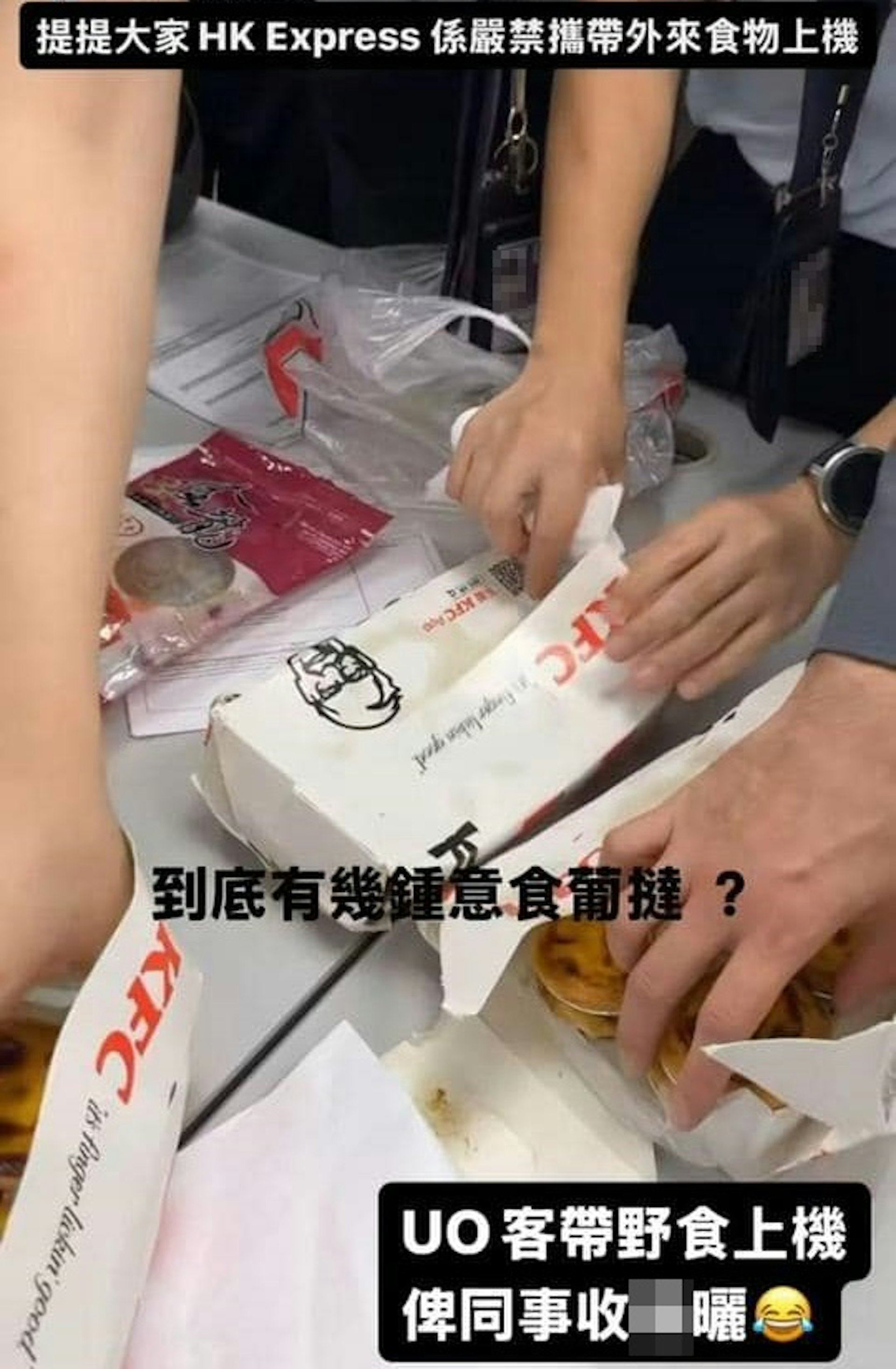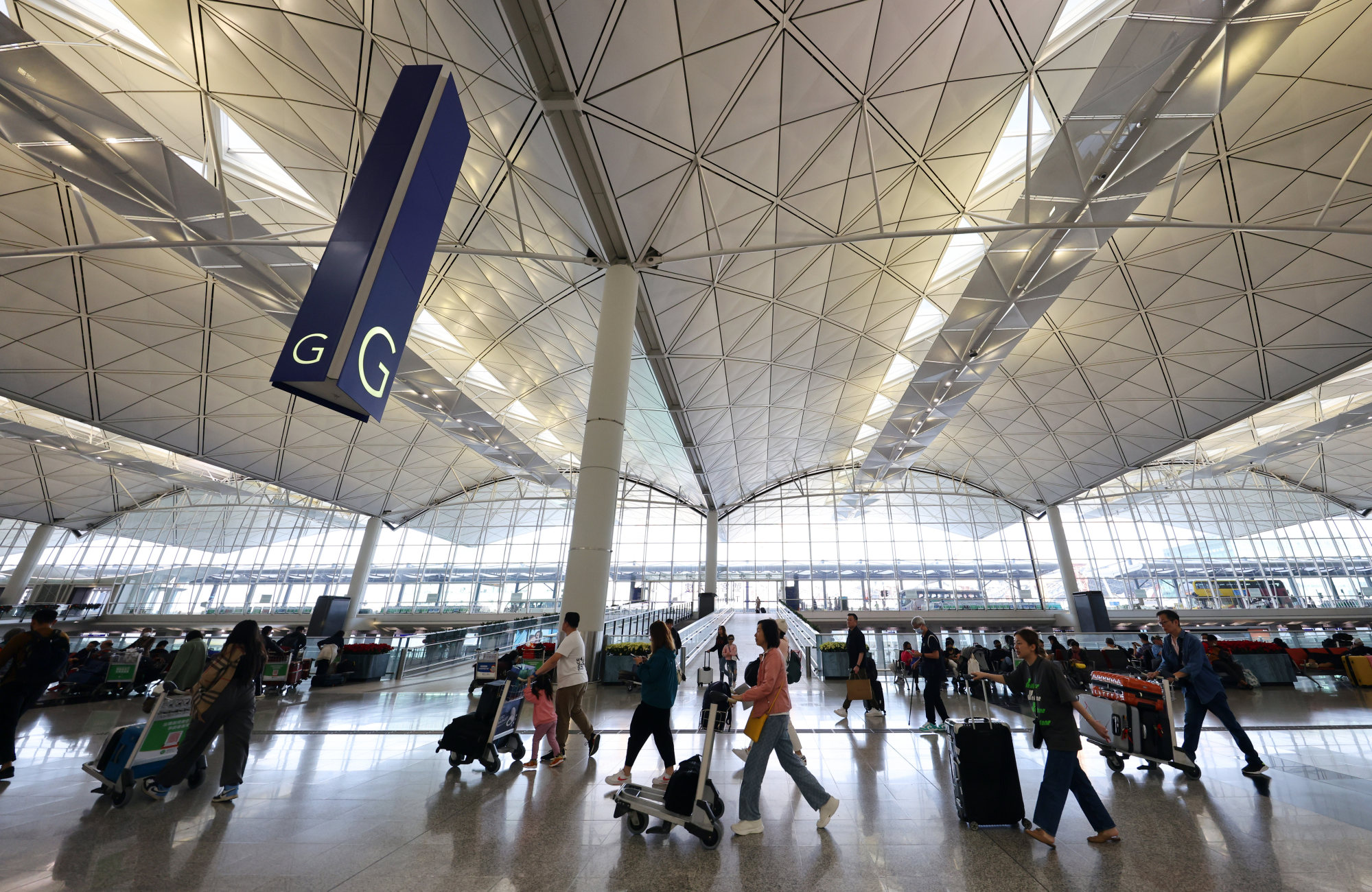Explainer | What items can Hong Kong passengers take on planes? The Post helps people navigate the rules
Online outrage erupted after a video of Hong Kong airport ground crew members eating Portuguese egg tarts confiscated from an HK Express passenger went viral.
Cathay Pacific Airways’ budget carrier confirmed yesterday that a ground staff member, from an outside contractor, found to be involved in the incident had been fired.
The company said the incident violated company procedures for handling food taken from passengers.
But the incident has also left many wondering how different airlines regulate what is allowed to be brought on board flights.
Here the Post breaks down the rules and regulations surrounding carry-on policies and how carriers compare.
1. Am I allowed to take food and drink from the airport on the plane?
Every airline has different rules on taking food onto their aircraft.
Hong Kong’s flag carrier Cathay Pacific allows passengers to take their own food and drinks on board, but warned that cabin crew would not help reheat or chill items because of hygiene concerns.
HK Express said it allowed food to be carried, but it cannot be eaten on the plane.
Greater Bay Airlines prohibits passengers from bringing food and drinks onto its aircraft, but Hong Kong Airlines does not have specific guidelines.
Other flag carriers, including Australia’s Qantas and Japan Airlines, do allow food to be brought on board.
Singapore Airlines does not forbid outside food, but it said that it can use its discretion if what passengers want to bring on board is found to be “offensive”, such as having a strong or foul smell.
Scoot, the budget arm of Singapore Airlines, and Malaysian budget airline AirAsia prohibit passengers’ food.

2. Can I get through security with liquids or gels?
Passengers are only allowed to take containers of up to 100ml (3.4 fluid ounces) containing liquids or gels, and aerosols up to a maximum limit of 1 litre, in line with International Civil Aviation Organisation guidelines.
Common items covered include creams, lotions, oils, perfumes, and toothpaste. Cosmetics, including mascara, lip gloss and lip balm, are also included.
There are exemptions for liquid medicines, including those bought off the shelf like cough syrup, as well as baby milk and other liquid food for infants. The Civil Aviation Department recommends keeping those separate.
Passengers are allowed to take food and drink items -including water, soup, and sauces – through security as long as they are within the 100ml limit.
To avoid inconvenience, the Civil Aviation Department recommends passengers wait until they pass through security to purchase such items.
But airlines may have their own rules on what types of food and drink can be brought on from that point.
3. What other items may be allowed?
Most airlines allow musical instruments to be brought on board, as long as they weigh a maximum of 7kg (15lbs) and are stored in a hard case.
But rules on size may vary among carriers.
Cathay Pacific allows musical instruments, including the case, of up to 36 by 15 by 9 inches. HK Airlines, however, has size requirements of 30 by 10 by 5 inches.
HK Express and Greater Bay Airlines allow musical instruments up to 22 by 14 by 9 inches on board.

4. What items are prohibited by all airlines?
Hong Kong’s Civil Aviation Department has a list of regulated items that all passengers must stick to when going through security screening, regardless of the airline.
Guns, incendiary and explosive items cannot be part of carry-on luggage.
The category includes objects such as toy guns, fireworks, and party poppers.
Chemical substances, including mace and animal repellents, are also banned.
Other items not permitted on board include objects with sharp points or edges such as knives.
Tools such as hammers and wrenches, as well as blunt objects such as baseball bats and martial arts equipment, are also prohibited.


